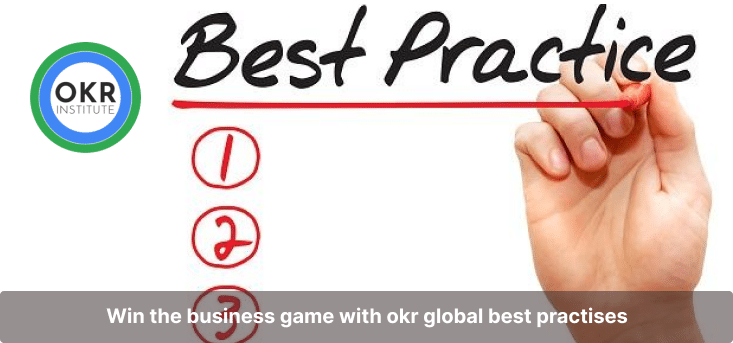
Writing Great Key Results that Lead to Excellent Outcomes
Writing great key results that lead to excellent outcomes requires the practical application of optimized best practices. Some comment that OKRs are ‘So simple,’ and to a degree, they are right. At first glance, OKRs are simply about writing Objectives, supporting Key results, and an action plan that aligns with the aforementioned. Once we put OKRs into practice, we, however, generally realize the following:
- Goals that are outcome focused have a 30% more likelihood of being achieved (As they are generally more inspirational and impactful) over goals that are more output focused
- OKRs drafted in isolation, meaning they are not aligned with the Vision of the company, nor the culture, and also not to other teams, tend to fail
- A lack of Leadership can render OKRs meaningless
- There are several inherent motivating mechanisms to OKRs, but we have to deliberately focus on them and bring them to life – engagement, collaboration, increased collaboration, creativity, and more.
- Failure to build the required financial and human resource capacity and the skills needed to achieve an objective is likely to make an OKR a ‘non-starter.’
- Without a high degree of clarity of Vision and strategies, aligning OKRs becomes very hard.
- Writing the most optimal vital results can be challenging; we might need more relevant data available. However, we must look for dependencies amongst our key developments to ensure the key results collectively stack up against the objective. All of the above combined can lead to great vital results.
Great Key results
- A general template for key results =
Increase or decrease a certain metric from _____ to _____, for example:
Increase daily active users from 1500 to 5000
And
Decrease churn rate from 5% to 2%
But: What criteria ensures as far as is possible that we are writing the most optimal key results?
- They should be measurable.
We grew up being told things like:
‘ Go study for your test’, make your list of chores, without a focus on the ultimate benefit of doing so, and this trend continues at school, university, and our careers. This habit is often the culprit in causing people to write output-focused key results, especially when they start out writing OKRs. Key results such as the following are output focused and not measured:
Facilitate coaching sessions for our Baristas
Conduct a Customer Survey
Create a new FAQ page
The challenge with writing Key results such as the above is that they do not differ from a task list, list of projects, or initiatives. Therefore, they are not key results at all. Key results combined are our ‘navigation system toward achieving an objective. To be optimal, key results must contain a metric, such as a number or percentage. We will do well to keep in mind at all times that great key results have several dimensions to them.
- They must keep track of progress toward an outcome
A key result such as ‘facilitate 5 training sessions’ is not optimal as it simply denotes a repetitive activity without any quality assurance; therefore this particular key result does not necessarily keep track of progress towards a desired outcome. If we however ‘facilitate 5 training sessions for our baristas to reduce the serving time of coffee from five minutes to two minutes –
When we actually progressively move toward reducing the serving time, we are moving closer to our desired outcome of Happy customers that love our coffee
- They should represent a stretch for the team
By its very nature OKRs are aspirational and far-reaching goals. After drafting key results, we should question them to ensure their validity: does this really represent a ‘stretch’ for us or is it easy to achieve this key result? If it is too easy to actualize it is likely to be ignored.
- Collectively, they must meet the objective
In some cases, teams draft and meet key results, yet they still need to actualize the Objective fully. In those cases, they did not prepare optimal key results and would have to add more key results or refine the current key results; they might need to do both. Only after thorough retrospective thinking can they then draft great vital results.
- They can be a mixture of Leading and Lagging indicators (This is contextual)
Generally speaking, what we have seen especially considering larger and more traditional organizations that operate in a highly regulated environment but wishes to include agile practices within their organizations, is a preference to either link OKR frameworks to KPIs or include a KPI (lagging indicator) within their OKR frameworks.
It is not an ‘either or’ scenario when it comes to OKRs and KPIs (or a choice between leading and lagging indicators) instead it’s both, as they complement each other.
Register for our OKR Practitioner course to learn how to draft great key results that lead to excellent outcomes.
Talent Development Director of the OKR Institute
Related Courses
Recent Posts
Tags
#OKR
#OKR Coaching
#OKR Coach







